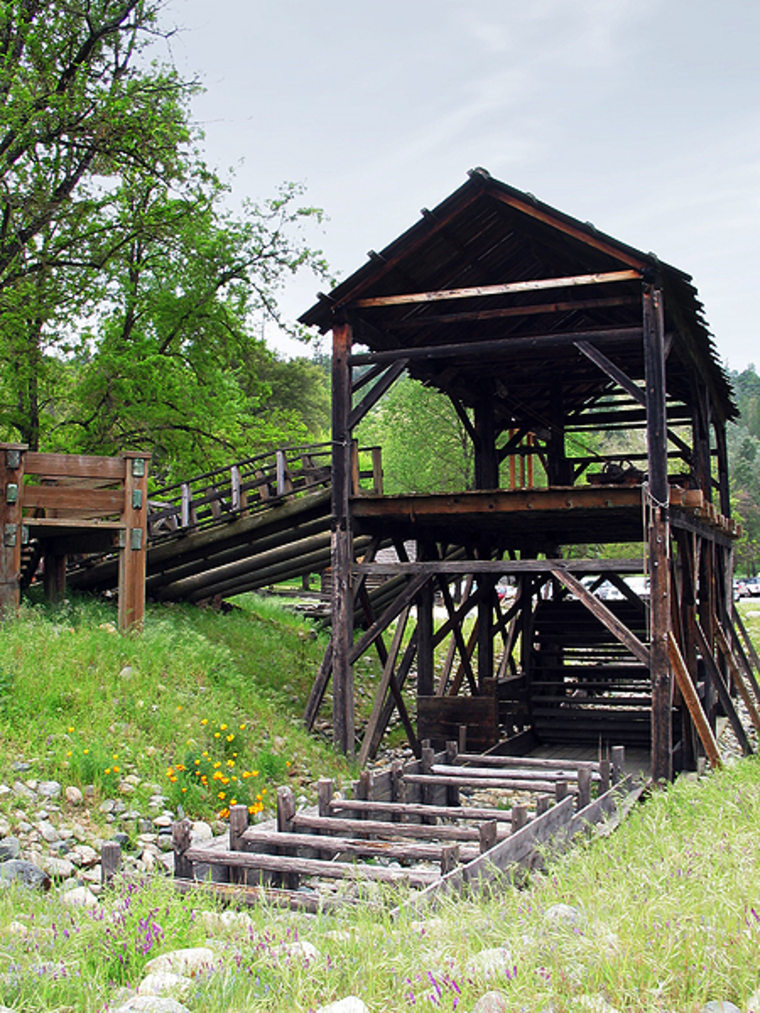As the director of the Colorado Springs Pioneers Museum, Matt Mayberry tends to take the long view, a fact that helps explain why he believes a tanking economy can be a boon to travel.
Consider the museum’s current exhibit on the Colorado Gold Rush, which marks the 150th anniversary of the historic 1859 strike. According to Mayberry, the ensuing stampede probably wouldn’t have happened if the country hadn’t been reeling from the aftermath of the Panic of 1857. “The economic conditions of the day,” he says, “were so eerily similar to what’s happening today.”
Alas, even with gold prices currently hovering around $900 an ounce, a major new rush is unlikely. Nevertheless, given the role the precious yellow metal has played in the settlement of North America, it still offers an enticing incentive for travel. When the gold bug bites, here’s where to head:
North Carolina
Looking for a nugget of precious-metal history? The first documented gold find in the U.S. wasn’t in Colorado or California, but rather, in North Carolina. In 1799, a young boy, Conrad Reed, found a yellow rock on the family farm near Midland, just east of Charlotte. It reportedly weighed 17 pounds and was valued at $3,600.
Two centuries later, Reed Gold Mine is a popular state historic site with a visitor’s center, underground tunnels and free admission. Visit June 12–13 during the third annual First Gold Festival for mining demonstrations, prospecting seminars and the N.C. Open Panning Championships.
Georgia
In 1829, Georgia became the focus of the nation’s first gold rush after small nuggets were found in streams outside Dahlonega, an hour north of Atlanta. Today, you can experience that history at the Dahlonega Gold Museum — or try to make your own at two nearby working mines.
Available through Dahlonega.org, the Gold Fever Package includes admission to the museum, a 45-minute tour of the underground Consolidated Gold Mine and the chance to pan for gold and grub for gem stones at the Crisson Gold Mine. Tickets are $22 for adults (13 and older), $17 for children.
California
Twenty years after the Georgia Gold Rush, the biggest mining frenzy in North America erupted after James Marshall discovered gold at Sutter’s Mill in Coloma, in the Sierra foothills, east of Sacramento.
Today, that history is everywhere along Highway 49, although a more entertaining option may be to catch one of the region’s many heritage events and historic reenactments. Among the upcoming options: Gold Rush Day in Angels Camp (May 2), Founders Day in Placerville (June 13) and Black Bart Hold-up Days in Sutter Creek (June 20–21).
Colorado
This year marks the sesquicentennial of the 1859 Colorado Gold Rush and several communities in the state have joined forces to create the Colorado Gold Trail, a scenic route that provides a guide to many of the historic highlights.
Along the way, visitors can explore The National Mining Hall of Fame and Museum in Leadville, catch a performance at the 130-year-old opera house in Central City or experience live music, old-time arts and crafts and the always-hilarious outhouse races during Kingdom Days in Breckenridge (June 20–21).
British Columbia
One of at least five B.C. gold strikes during the 1860s, the Cariboo Gold Rush of 1861–1862 is most easily experienced by driving the Cariboo Highway (Highway 97) to Barkerville, a historic town/tourist attraction complete with costumed interpreters, stagecoach rides and live period performances.
For a more adventurous experience, consider hiking the 25-mile Gold Rush Pack Trail, which winds through the high country between Keithley Creek and Barkerville. Whitegold Adventures leads four-day guided hikes (C$650) along the historic route in September with other dates available upon request.
Yukon
Every summer, a steady stream of cars and RVs wends its way between Whitehorse and Dawson City to get a taste of what the Klondike Gold Rush and the “Days of ‘98” were all about. In Dawson, they pan for gold, sip sourtoe cocktails (don’t ask) and catch the can-can show at Diamond Tooth Gertie’s.
Introduced last year, the Great River Journey offers a more private, albeit pricier (C$7,800) alternative. The eight-day all-inclusive adventure combines a boat trip down the Yukon, overnight stays at wilderness lodges and the chance to explore sites and scenery inaccessible any other way.
Alaska
Often overshadowed by the Klondike stampede, Western Alaska hosted its own rush after a trio of prospectors (aka the “Three Lucky Swedes”) discovered gold in Anvil Creek in 1898. Three years later, the lawless tent city that sprung up nearby was officially incorporated as Nome.
Modern-day gold bugs can relive that history during the annual Poor Man’s Paradise gold panning contest (July 23 this year) or by trying their luck on the so-called “golden beaches of Nome” where the sand is intermixed with fine flakes of flour gold. You probably won’t get rich, but you can say you were there during the Days of ’09.
Rob Lovitt is a frequent contributor to msnbc.com. If you'd like to respond to one of his columns or suggest a story idea, .
